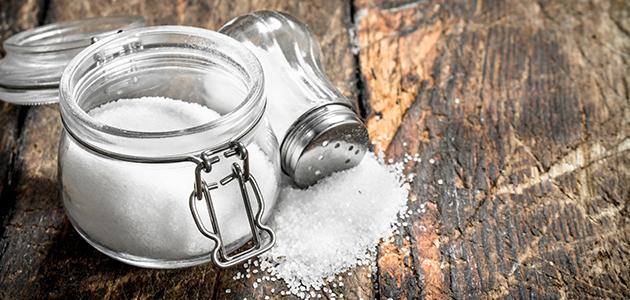
The average American consumes 50% more sodium than recommended every single day, and while sodium helps the body to keep fluids in a normal balance and plays a key role in normal nerve and muscle function, studies show that too much can be dangerous.1, 2
According to Live Science3, excess sodium increases blood pressure because it holds excess fluid in the body, and that creates an added burden on the heart. Too much sodium also increases the risk of stroke, heart failure, osteoporosis, stomach cancer and kidney disease. Some people are more sensitive to sodium than others, which means when they eat sodium they retain fluid and their blood pressure rises4.
So how much is too much? As always, talk to you doctor about your specific dietary needs. Depending upon your age and other health issues, your doctor will be able to advise you about making the kind of healthy diet changes that are right for you.
It’s important to remember that our bodies do need sodium – we just don’t need as much as we’re probably taking in. According to The American Heart Association5 and The Government of Canada6, adults should consume no more than 2,300 milligrams (mg) of sodium a day. NHS in the United Kingdom recommends 2.4g (2,400mg) a day7. This is roughly the equivalent of just one teaspoon of salt.
Bear in mind, like sugar, sodium is added to processed and pre-packaged foods, so being mindful about how much sodium you consume isn’t just about watching what comes out of your salt shaker. You have to check those package labels too! For help understanding food labels, visit the Government of Canada website.
Simple tips for reducing sodium intake
The National Kidney Foundation8 recommends these simple ways to reduce the amount of sodium you eat every day:
- Choose fresh. Fresh meats and some vegetables have naturally occurring sodium, but it’s far less than what you’ll find in products like ham and bacon, or vegetables and meats containing added seasoning, marinades or sauces.
- Read the labels. As stated, it’s important to check the labels on processed foods to see how much sodium is in each serving.
- Choose your spice blends and seasonings wisely. You may think you’re simply buying a blend of herbs, but some seasoning blends do contain sodium. Similarly, choose garlic powder over garlic salt.
- Comparison shop. Look for different brands of the same food item until you find the one that has the lowest sodium content. Many brands now have low or no-added salt options.
- Research your restaurants. Some restaurants include the sodium content of the dishes served there. Check the website in advance to make healthier choices, and ask if you can have your dish served without salt when you order.
Blood Pressure UK9 recommends trying the following salt substitutes to bump up flavor when you’re cooking:
- onions
- fresh, frozen or dried herbs
- garlic
- shallots
- chillies
- ginger
- cinnamon
- lemon juice
- pepper
- vinegar
- red or white wine, cider or beer
- spices – but check the label to make sure that they only contain low levels of salt (or sodium)
For more information on sodium and how to reduce your intake, visit the American Heart Association and the British Heart Foundation.
SOURCES
1 https://www.kidney.org/news/ekidney/june10/Salt_june10
2 https://www.merckmanuals.com/en-ca/home/hormonal-and-metabolic-disorders/electrolyte-balance/overview-of-sodium-s-role-in-the-body
3, 4 https://www.livescience.com/36256-salt-bad-health.html
5 https://www.heart.org/en/healthy-living/healthy-eating/eat-smart/sodium/how-much-sodium-should-i-eat-per-day
6 https://www.canada.ca/en/health-canada/services/nutrients/sodium/sodium-basics.html
7 https://www.nhs.uk/live-well/eat-well/salt-nutrition/
8 https://www.kidney.org/news/ekidney/june10/Salt_june10
9 http://www.bloodpressureuk.org/microsites/salt/Home/Howtoeatlesssalt/Cooking
417718 CAN/US (08/19)




